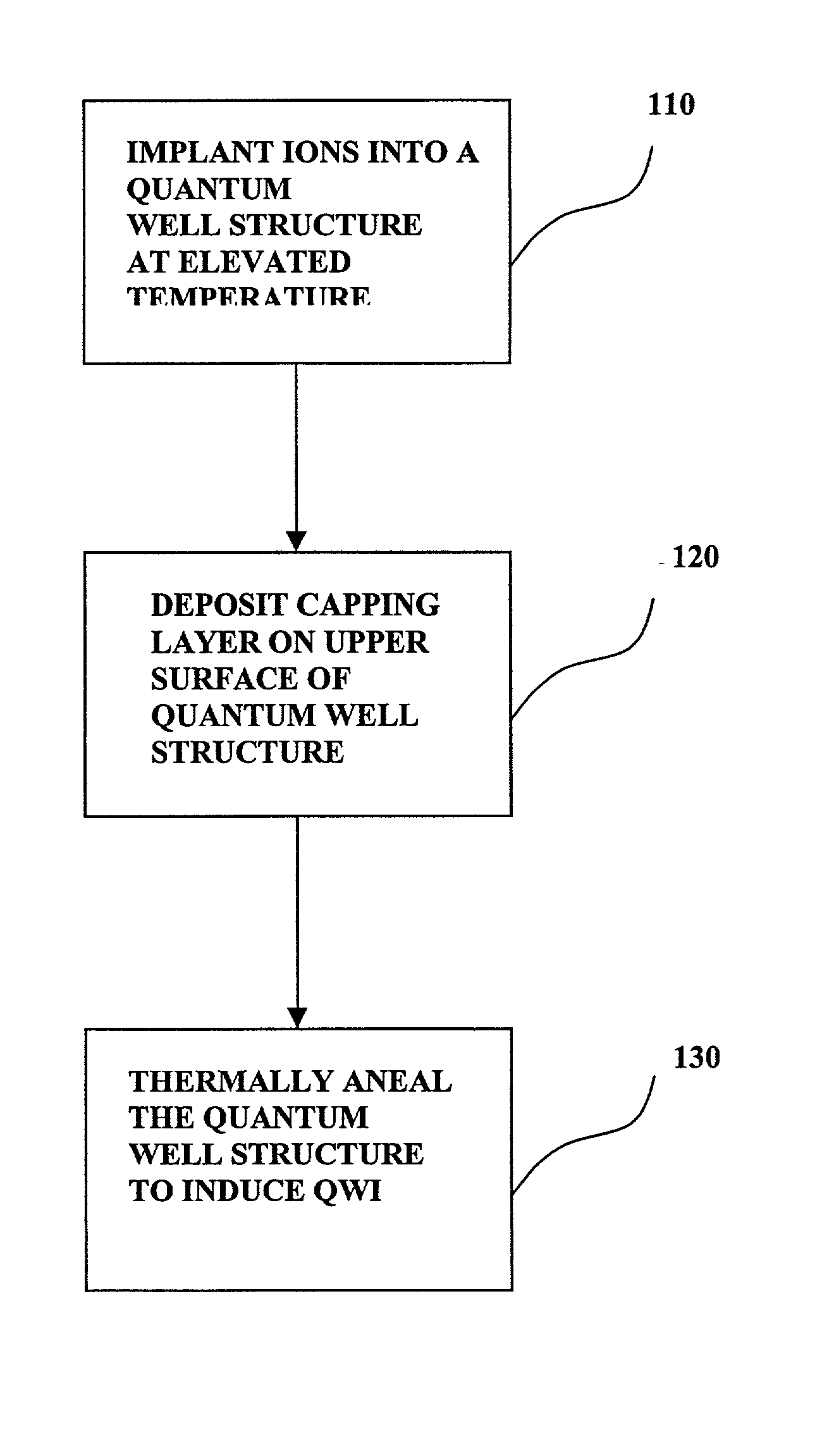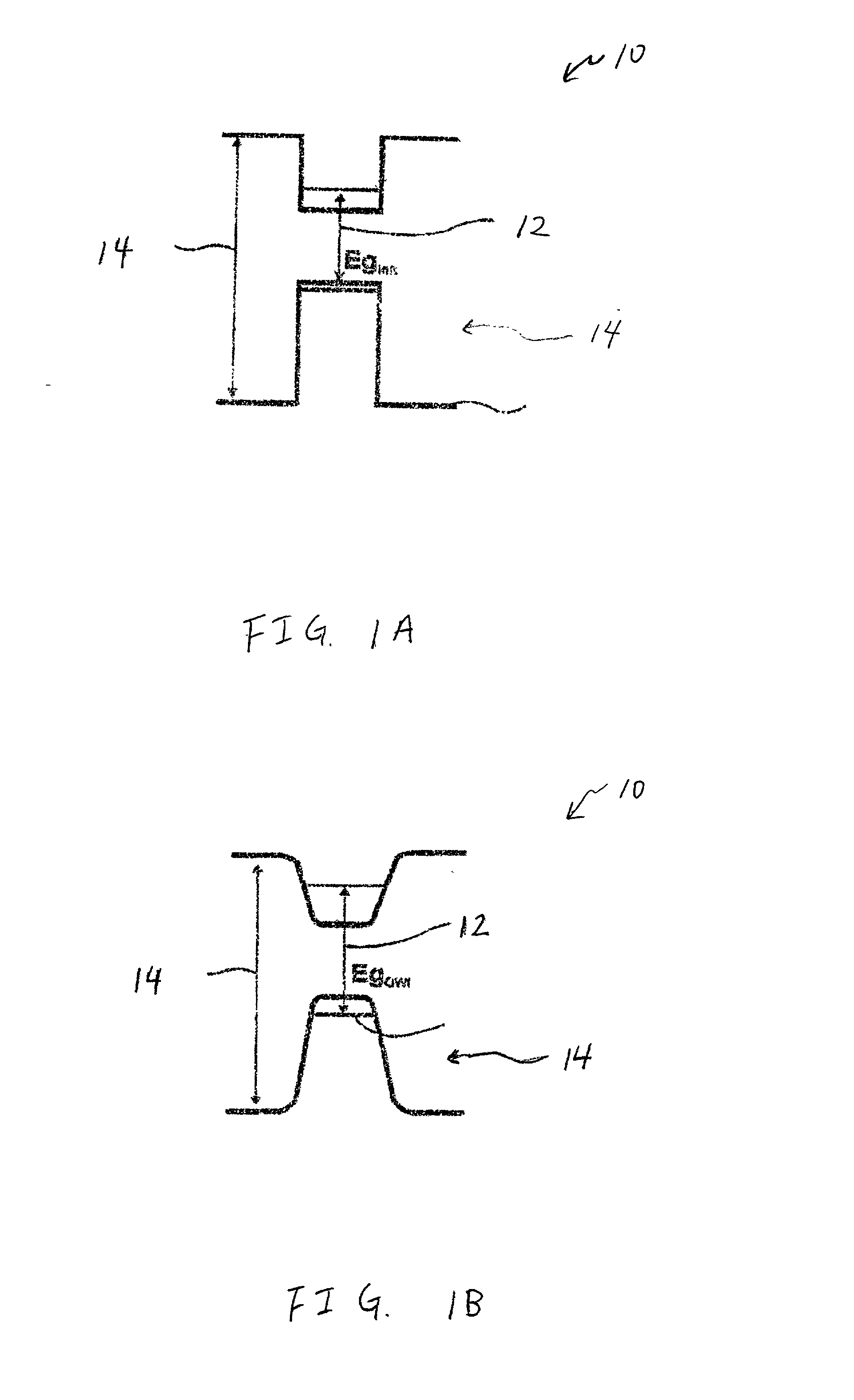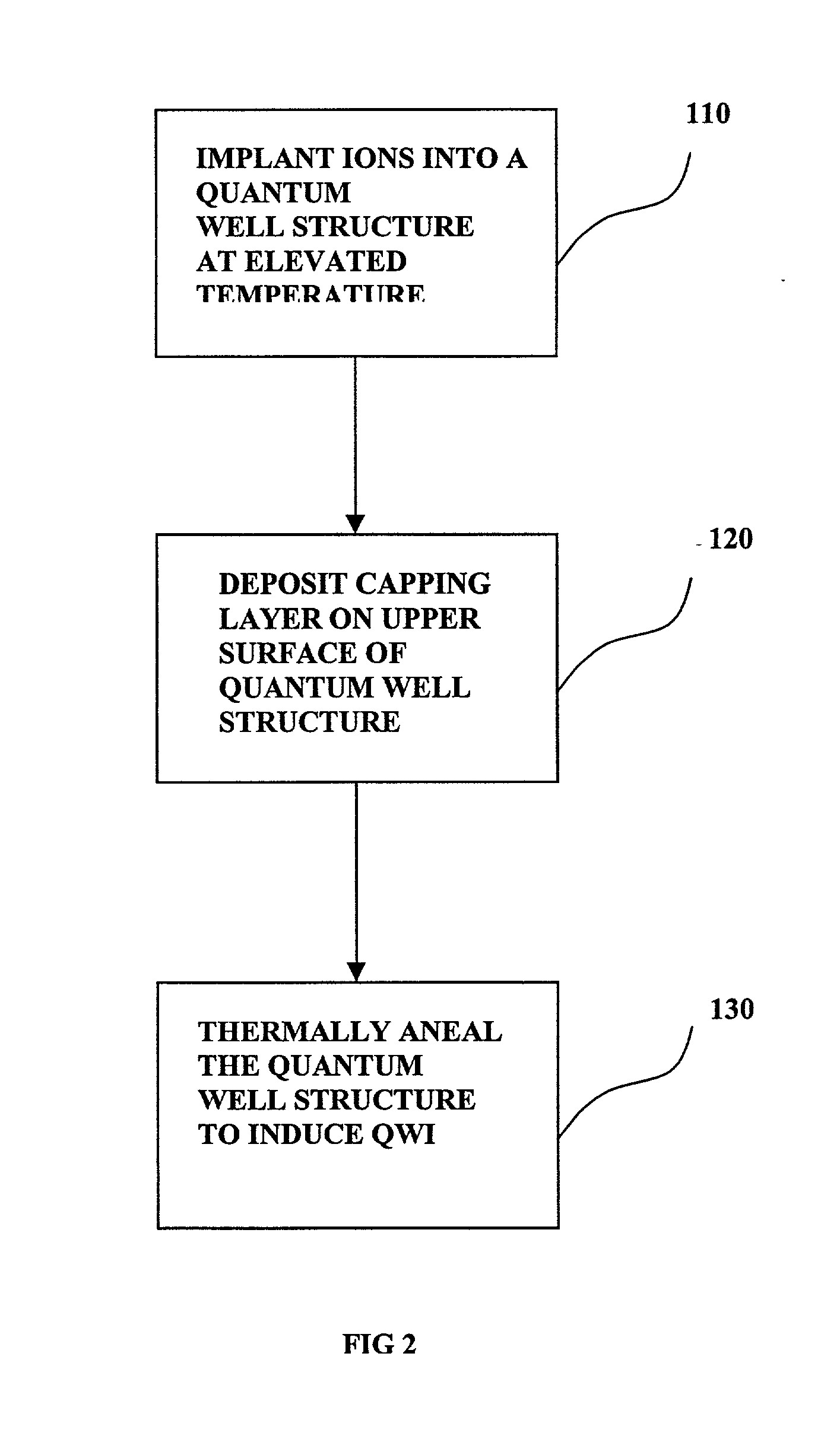Method for shifting the bandgap energy of a quantum well layer
a quantum well and bandgap energy technology, applied in the direction of lasers, nanooptics, laser details, etc., can solve the problems of severe damage in the quantum well structure, atoms in the sample vibrating violently, and points that can move around in the crystal structur
- Summary
- Abstract
- Description
- Claims
- Application Information
AI Technical Summary
Problems solved by technology
Method used
Image
Examples
Embodiment Construction
[0051] Described herein are various exemplary processes and embodiments of the inventive TAIVID process. The processes can, for example, be used to monolithically integrate various photonic devices on the same substrate (e.g., a wafer), wherein the various photonic devices possess different quantum-well bandgap energies.
[0052] To be consistent throughout the present specification and for clear understanding of the present invention, the following definitions are hereby provided for terms used therein:
[0053] The term "deep-level ion species" refers to atomic species that are not ionized in III-V semiconductor materials at room temperature; and
[0054] The term "shallow-level ion species" refers to atomic species that become electrically active at room temperature.
[0055] The term "indirect-well implantation" refers to a process which utilizes an implantation condition for which the range of peak impurity and / or vacancy concentration is placed .gtoreq.0.5 .mu.m away from a quantum well s...
PUM
 Login to View More
Login to View More Abstract
Description
Claims
Application Information
 Login to View More
Login to View More - R&D
- Intellectual Property
- Life Sciences
- Materials
- Tech Scout
- Unparalleled Data Quality
- Higher Quality Content
- 60% Fewer Hallucinations
Browse by: Latest US Patents, China's latest patents, Technical Efficacy Thesaurus, Application Domain, Technology Topic, Popular Technical Reports.
© 2025 PatSnap. All rights reserved.Legal|Privacy policy|Modern Slavery Act Transparency Statement|Sitemap|About US| Contact US: help@patsnap.com



